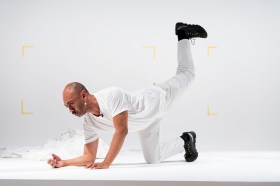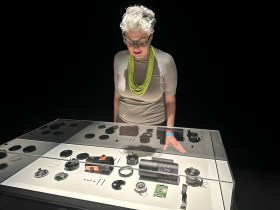Is all the concern surrounding silicosis just hype, fear and worst-case scenarios?
Whether you are a professional ceramicist or a glass artist, or just define yourself as a casual hobbyist, silicosis does not discriminate. Protecting yourself against it can be as simple as some sound habits.
Read ahead:
Silicosis: what is it?
Silicosis is often considered an invisible enemy.
Essentially, it is a lung disease caused by breathing in crystalline silica dust, often found in materials like sand and concrete. For this reason – along with bladder cancer – it is often considered a ‘tradies’ disease. But it also affects ceramicists and glass artists.
Silicosis occurs when silica dust is inhaled deep into the lungs. The lungs are unable to remove the dust and the crystalline structure, causing damage to the tissue. Silicosis is usually due to repeated exposures over an extended period, and the disease has a long gestitation period. It will lead to inflammation, possibly scarring, and decline in lung capacity. It is incurable.
Silica particles exists in dried clay and powdered glazes and are easily carried in day-to-day studio practice. For glass artists, it is a different micro structure that is equally as deadly, again transported to the lungs via fine dust.
The problem with both is that these deadly particles can stay airborne for a very long time – airborne silica sinks at the rate of 30cm per hour because they are so fine, and are easily disturbed after they have settled.
American chemist and artist Monona Rossol, who has regularly lectured on the topic – including the 2020 Silicosis Summit – A Preventative Approach, presented by WorkSafe Victoria – makes the point that ‘this means that you can breathe in silica even if you think the environment is dust-free after cleaning’.
Read: 5 tips to alleviate the stress of preparing an exhibition
Silicosis: who is at risk?

Over the years, knowledge around studio hazards and best practice have been normalised, and formal education has also long instilled safety practices. But with many TAFE and university courses closing, private classes have filled this space. And with no formal regulation, this rise in hobbyists, community and home studios can pose a threat to makers.
‘If a studio isn’t kept dust free and ventilated, and masks aren’t worn when mixing glazes and loading kilns, the risk of silicosis is a real danger for dedicated makers,’ Australian Ceramics Association’s former CEO Debbie Pryor told ABC.
While debates shift and change over the level of risk of silicosis for ceramicists, because of the lack of early awareness and slow gestiation of the disease, there is currently not a lot of data on risk percentages.
Pottery dust gets everywhere, on your body and your surroundings. Anyone who sweeps the floor of a ceramic or glass studio or work area, for example, is immediately at risk. For potters, mixing glazes poses an area of risk. While, for glass artists, cutting and grinding glass is considered high risk. Plus, removing dust from kiln paper when slumping and fusing glass requires a high level of protection.
While it is good to be concerned, you don’t need to become stressed. Rather just develop habits that will mitigate the risk.
Silicosis: how to protect yourself
If you are a community or public access ceramic studio, you need to enforce inductions to the risks of silicosis and set some strict studio rules. A simple ‘do, or don’t play’ mantra should be adopted. Leaning the risks, and the mitigation, is important.
As there is no formal regulation, like in trade industries such quarrying, the production of stone kitchen benches or builders cutting cement; the arts are largely reliant on self-regulation. So, awareness is key.
Silicosis: tips for your studio practice

Your studio set up:
- If possible, have your studio separate from your living spaces
- Have a separate set of studio clothes and shoes (clogs or crocks are good as dust doesn’t get into the laces or web fabric of runners)
- Leave your studio shoes at the studio, and don’t transport via car mats or to your private space
- Consider purchasing a HEPA ventilation system / or air filter to run overnight to clear the air
- Use correct fitting of face masks and respirators – a good example is Sundstrom’s Respirators, or have a good supply of P2-grade disposable masks, for single use only
- Consider wire shelving on wheels for storage as they have less surface space for dust and are easy to move out of way to mop underneath
- If you are extremely concerned, you can buy and air quality monitor
- Do not use heating or cooling with fans that may disturb dust
In your practice:
- Tie your hair back, and roll up your sleeves
- Consider wearing a studio apron that is easy to remove, without throwing up dust, like pulling off a hoodie
- Be diligent about wet cleaning all surfaces, and do it regularly as you’re working
- Try not to let clay dry out and become airborne, and collect trimmings from the benches when damp. It is best to put all fragments in a bucket and cover with water and a lid
- Wipe down all your tools. Again, avoid dry clay that needs to be scaped off
- When using a Dremel on glass always wear a mask, and wet wipe the object and the area afterwards.
- The same goes for cutting or grinding any glass – preferably use a ventilating mask or high grade to prevent breathing in airborne micro-shards – and always wash your hands immediately when finished
- Consider scooping rather than tipping your glaze powers when you measure
- Consider mixing glazes or handling powdered ingredients outside, and if not, wear a ventilating mask
- Glaze spills should be wiped with a wet sponge immediately
- Never ‘dry-sand’ or fettle any clay body. Incorporate good finishing practices into wet/leather-hard clay bodies to prevent the need to dry fettle
- Use a damp sponge to smooth/refine greenware when needed
- If needed, use wet/dry sandpaper sheets, soaked in water on dampened bisque ware
- Never dry sweep the studio floor or benches – always mop
- If there’s haze on the floor, you aren’t mopping well enough. Mop again
- When using kiln paper while fusing glass, be sure to vacuum afterwards while wearing a mask – the is highly toxic
- If you use a vacuum, make it a ‘Dust Class H’, then always wear a heavy-duty mask. Vacuum cleaners tend to send just as much airborne as collecting, and then emptying them creates a further dust cloud
And at the end of the day:
- Take a shower as soon as you finish in the studio – especially before lounging around, cooking, or helping the kids
- Have a separate laundry basket with a sealed lid for your dirty studio clothes, and wash at the earliest moment
- Remember also to clean your studio towels, canvas, and floor mats regularly. Soak them in water first to remove the bulk of particles before contaminating your washing machine.
- Don’t run air filters while you are in the studio – it can stir up the dust more – set a time so it goes after you leave
- Remember, you wipe your feet on your studio door mat all the time and it is often forgotten – either vacuum or shake regularly, or course wearing a ventilating mask
Discover more arts, games and screen reviews on ArtsHub and ScreenHub.






